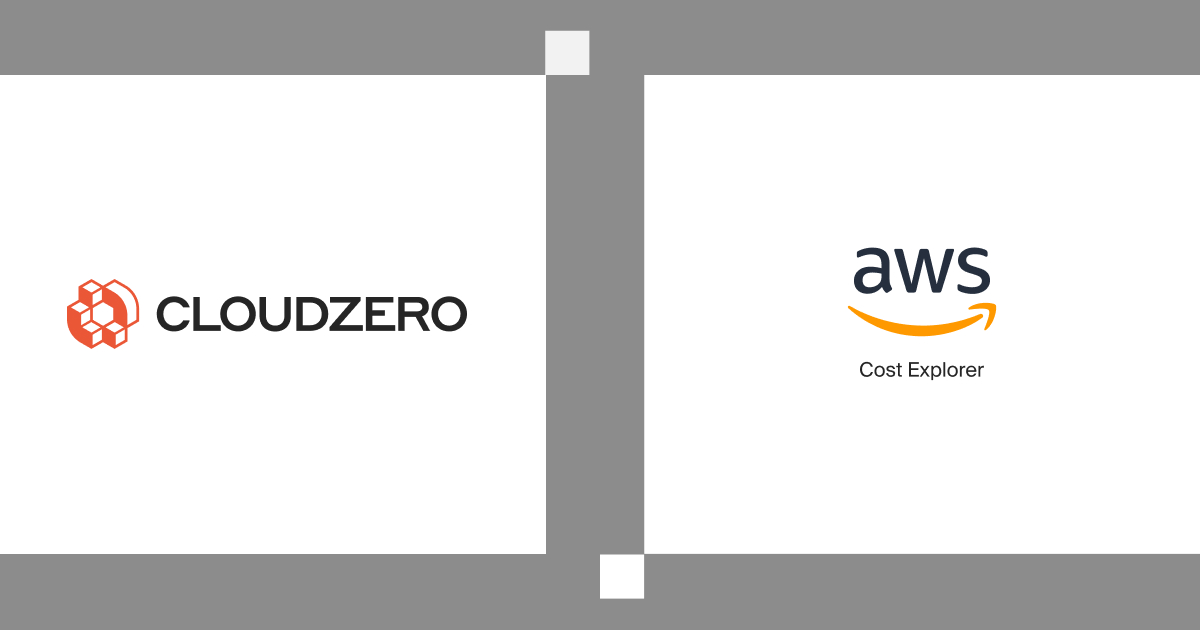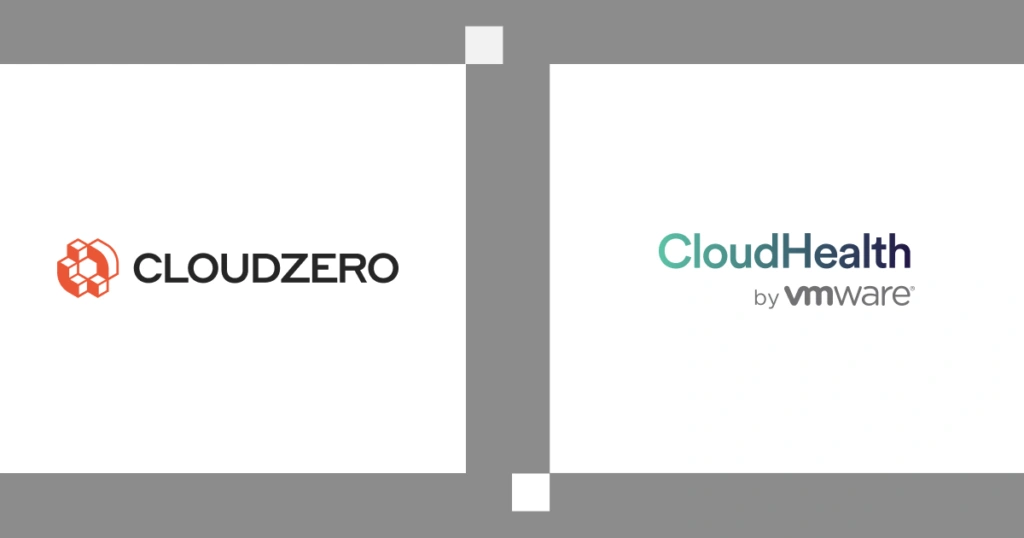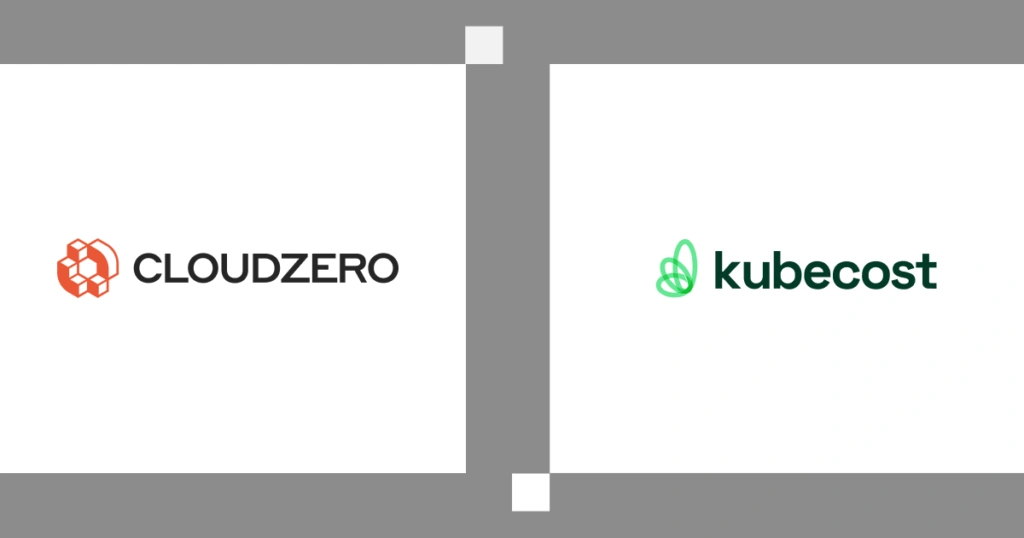In the dynamic realm of cloud cost management, the comparison between CloudZero and AWS Cost Explorer unveils distinct advantages and considerations for organizations seeking to optimize their cloud spend.
CloudZero stands out with its holistic approach, ingesting 100% of cloud spend across various platforms, offering real-time visibility, and empowering engineers with cost insights during development.
Here’s how CloudZero takes an engineering-led approach to cost optimization — and how AWS Cost Explorer compares from a high-level, all the way down to the nitty-gritty …
| Code-driven cost allocation ensures you get accurate, hourly, and dynamically explorable insights you can act on immediately. | Manual cost tagging may lead to tag-related omissions, undermining the accuracy of your cost insights. |
| Filter by cost Dimensions that actually matter to your business — there are up to 12 default dimensions to choose from, plus whichever custom Dimensions you want to build. | AWS-exclusive data means any other cloud, PaaS, or SaaS products you might use will not factor into your cost management activities. |
| Engineering-led optimization empowers engineers to tell how their decisions affect costs and find ways to create cost-effective solutions at the architectural level. | Finance-led optimization may lead to silos between finance and engineering. Engineers, for example, might be unable to discern between powering innovation and simply overspending. Finance may not be able to tell whether cost cutting will affect engineering velocity and how badly it may affect system performance, hence customer experience. |
Where CloudZero Excels
Where CloudZero excels
- Ingests 100% of your cloud spend — including AWS, Azure, GCP, Snowflake, and more
- Allocates 100% of spend in hours — even if you have messy tags
- Accurately allocates shared cloud costs and untagged and untaggable resources
- Empowers engineers to see the cost impact of their decisions while they’re building
- Provides real-time cost anomaly detection via Slack or email to help prevent overspending
- Use an Engineering-Led Optimization (ELO) approach
- Interactive and dynamically explorable dashboards enable drilling in and out of your cloud costs (e.g., Total cost vs cost per customer)
- Gives access to a designated FinOps Account Manager (FAM) with expert advice and best practices
- Offers a tier-based, predictable pricing model
Where CloudZero may be less effective
- Directly purchasing or selling Reserved Instances and Savings Plans (although we’ve partnered with ProsperOps to help you do that without leaving the CloudZero platform)
- Infrastructure changes are not automatically applied based on cost recommendations
Detailed Comparison Chart
AWS Cost Explorer
Data Quality And Scale
Cost data reflected in real-time
Yes. Dynamically explorable, and delivers new views according to any parameter within seconds.
No. Takes 24 hours to several days to surface costs.
Configuration changes affected immediately
Yes
Yes, if custom rules are configured to run automatically.
Infrastructure Support
Supports multi-service (e.g., Snowflake, Datadog, New Relic, etc.)
Yes. Single pane of glass for all cloud spend.
Limited to AWS.
Supports multi-cloud (e.g., Azure, AWS, Oracle Cloud, GCP, etc.)
Yes. View multi-cloud and multi-service cost data in a single place.
Limited to AWS.
Supports Kubernetes
Complete K8s cost analysis in the same dashboard as other spend, with hourly granularity. Full allocation within hours.
Limited. Daily granularity, minimal shared cost allocation, separate view. Full allocation may take several days to weeks.
Aligns Kubernetes and non-Kubernetes spend
Yes. No additional processes or separate dashboard views are required.
No. You must create a separate dashboard for each, every time.
Ability To Organize Cost And Track Cost
Tag-based cost allocation
Yes. Explore the cost of tagged, untagged, and untaggable resources.
Overreliance on tags may cause tag-related omissions.
Code-driven cost allocation
Yes
Limited
Splitting shared cost: proportionally
Yes
Percentage-based
Splitting shared cost: telemetry-driven allocation
Yes. Dynamic and easily digestible.
Manual, not driven by telemetry.
Average cost per customer metrics
Yes
Yes
Cost per individual customer, driven by telemetry
Yes, with even deeper insights, such as cost per customer per feature — and even cost per API call per feature per customer.
No cost per customer view.
Engineering-Led Optimization (ELO)
Yes. Delivers cost reports in engineering language, such as cost per deployment, per environment, per feature, per service, etc.
More suited to just finance.
Engineering Friendliness
Slack integration
Yes
Yes
Automatic cost anomaly alerts
Timely, noise-free, and context-rich alerts based on real-time cost anomaly detection for accuracy.
Available. Triggers automated actions.
Cost debugging workflow (drill down into costs)
Context-rich, hourly, and at the resource and service levels. Reveals root causes to ease follow-up. Offers up to 5 years historical spend data.
No drill-down. Static resource and usage-level reports every 24 hours or more (not per hour). Provides up to 1 year historical spend data.
Engineering event correlation (e.g., GitHub)
Near-real-time cost impact visibility for engineers with hourly reports.
Limited to daily (24 hours later) reports.
Services
Dedicated FinOps resource
100% of FinOps Account Managers (FAM) are FinOps Certified Practitioners.
Support staff has indeterminate FinOps background.
Shared Slack channel to chat with resource
Yes. Support also includes ongoing consultations with a FinOps Account Manager and in-product recommendations.
No. Requires extra, paid support. It can take up to several tickets and days to resolve an issue.
Managing commitment discount programs
Automatically buy and sell Reserved Instances
Buy and sell Convertible and Standard RIs in partnership with ProsperOps, without leaving the CloudZero platform.
Yes
Automatically buy and sell Savings Plans
Buy and sell Convertible SPs in partnership with ProsperOps, without leaving the CloudZero platform.
Yes
Spot instances orchestration
Automatically switch workloads between On-Demand and Spot instances in partnership with Xosphere, without leaving the CloudZero platform.
Yes
CloudZero Differentiators
1. Cost allocation
CloudZero helps you allocate 100% of your cloud spend in hours, not weeks or months.
CloudZero does not rely on tags to allocate costs. Instead, it enriches your billing data with business- and system-level telemetry data, enabling you to capture, understand, and act on the costs of tagged, untagged, and untaggable resources — with no tag-related omissions.
Cost allocation in AWS Cost Explorer is tag-dependent, which means your cost insights will only be as accurate as your tags are. You may also be prone to tag-related omissions because tags provide insight as far as the scope they cover.
When you sign up for CloudZero for the first time, your cost data takes just a few hours to surface — regardless of how complex your environment may be. The same task takes 24 hours or more in AWS Cost Explorer, with some reports taking several days to produce.
AWS Cost Explorer only processes 12 months of historical data. With CloudZero, you can leverage cost data going back up to 60 months.
2. Unit cost
In terms of granularity, AWS Cost Explorer provides monthly and daily cost and usage reports by default. You have to manually enable resource-level and hourly granularity to have them both.
Also, AWS Cost Explorer updates your costs once every 24 hours or more. Cost by AWS service and Linked account are only available monthly. On the contrary, CloudZero delivers hourly cost intelligence by default — or on a custom schedule.
CloudZero also breaks down your cloud costs into per-unit insights; 12 dimensions by default versus only five for AWS Cost Explorer. With CloudZero, you can view cost per individual customer, per team, per project, per feature, per product, and more.
For example, you can tell exactly how much you spend to support a particular customer, helping you price their contract accordingly for maximum profitability.
3. Multi-cloud visibility
AWS Cost Explorer is limited to visualizing and analyzing cost and usage within the AWS cloud. You will need a separate cost tool if you have workloads running on other cloud providers.
You may even need several tools for each cloud or service you deploy. That can add complexity to managing your cloud costs, not to mention visibility gaps and surprise costs.
CloudZero unifies cost data from all cloud, PaaS, and SaaS providers — no exceptions. This means CloudZero will be your single pane of glass for all your cloud spend, helping you simplify analysis, eliminate visibility gaps, and prevent surprise costs.
4. Kubernetes cost visibility
AWS Cost Explorer only enables business mapping based on labels (the Kubernetes equivalent of tags). CloudZero lets you allocate Kubernetes spend based on native-Kubernetes concepts, such as cost per namespace, per cluster, per node, and per pod.
Also, CloudZero helps you understand Kubernetes costs by engineering and business metrics. That includes cost per environment, per deployment, per service, per customer, per feature, and more.
This ensures you can pinpoint who, what, and why your costs are changing at an hourly level — even if you have a complex Kubernetes environment. In turn, you can tell exactly what to do next to optimize your Kubernetes costs and related usage.
CloudZero ingests telemetry data, delivering one of the industry’s most advanced Kubernetes cost analysis and accuracy. This includes surfacing idle resource costs in your Kubernetes environment and allocating 100% of your spend in hours, not days like AWS Cost Explorer.
5. Cost optimization
AWS Cost Explorer offers a number of cost optimization tools. Rightsizing recommendations highlight idle and underutilized resources that you can optimize to match your workload demands.
Reservation recommendations let you see where you could use Reserved Instances to lower your Amazon EC2 costs. With resource-based recommendations, you can identify resources for which you can optimize usage and thus costs.
You must enable these recommendations through the AWS Cost Explorer console and wait 30 hours for the first batch to generate. In case you decide to follow the recommendations, you have to manually implement them in your environment.
With CloudZero, you get a human FinOps Account Manager to help you on an ongoing basis. This not only reduces overwhelm, but also allows you to discuss strategy, get proven in-product recommendations, and track progress with an actual, dedicated cloud cost expert. The result; faster time to value for you.
For example, Demandbase used CloudZero to lower their AWS cloud spend by 36% in one year, helping them secure $175 million in financing.
6. Customer success
With CloudZero, you get a designated FinOps Account Manager (FAM) to answer your questions. You can talk to your FAM at your convenience and on an ongoing basis. Your FAM proposes best practices tailored to your environment and helps you implement them quickly.
AWS Cost Explorer may have several customer support members, but they have limited FinOps expertise. You get auto-generated cost recommendations based on historical spend patterns, which isn’t always optimal. Plus, advanced support costs extra.
The Bottom Line

Stuart Davidson
Platform Engineering Lead, Skyscanner






